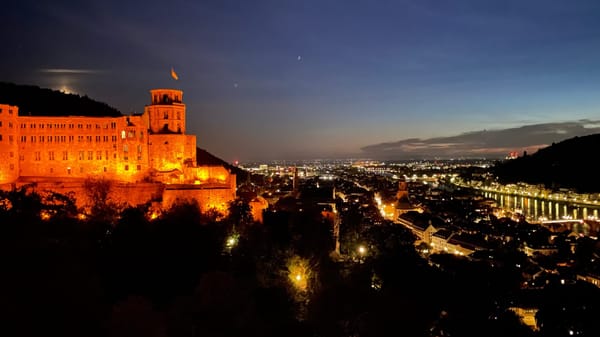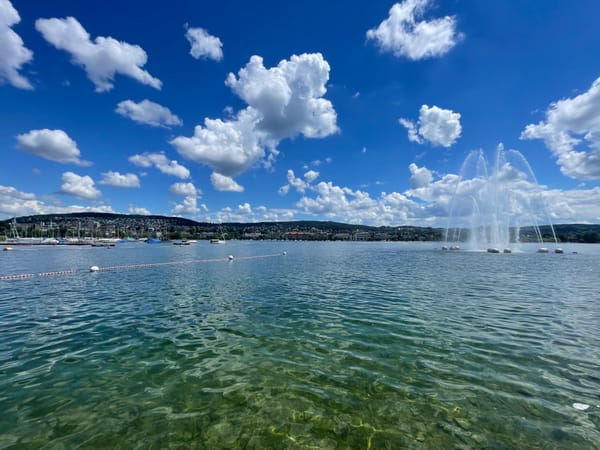What TV doesn't show you at the Paris Olympics
The 2024 Olympics are spectacular on screen, yet a live viewing gives us a raw uncut experience filled with little unique memories and thoughts.
Streets are closed off, police are patrolled around every corner working as street-signs for alternative routes, and the city has never seemed cleaner or better staffed than it was this summer, during the 33rd Olympic Games. Despite the sheer chaos that followed up to the events, where we didn’t have our tickets nor hotels confirmed, we found the entire trip and events ran with relative ease. My friends and I attended the Men's 50m Freestyle Final, Women's 200m Backstroke Final, Men's 200m Individual Medley Final, Men's 100m Butterfly Semi-finals and Women's 200m Individual Medley Semi-finals. We also saw the warm-ups, the athletes whom the camera did not film and all the other behind-the-camera movements, which highlighted the vast organisational requirements behind the planning of the events.
Entry and merchandise
The Paris La Défense arena, which hosted the swimming, opened up an hour and a half before the official start at 8.30pm. Within 10 minutes, we had passed the check-in, security and found our seats. With our what-do-we-do-now look, we knew we wanted to eat dinner, and find some merchandise. We exited the building to head towards the long, yet quickly moving line around the little hut staffed with a dozen of cashiers spread out over 20 meters. As we stood in line, grateful for the time to check out all the merchandise, I asked myself: what will last long? Which merchandise will break easily and which will not lose its style? Over the years, I noticed that with merchandise, such as PEZ dispeners, large keychains, pens or t-shirts with massive labels, that they will soon either degrade due to quality or become my pajamas or rags. A 500% markup pays for the name, not the quality. So I set my eyes on a very expensive €50 t-shirt in dark blue with a white and simple “2024 Paris” text on the front. Something, I felt confident I would want to wear for many years. At the cashier, the women behind the counter was relaxed enough to allow us to open up the t-shirts for size inspection, but quick and efficient enough to not waste any-time. As we aimed to pay, we were surprised to learn that only one card was accepted, Visa. ‘Visa dominates France’, my friend proceeds to explain. ‘It is la carte bleue (the blue card)’. Fascinating, I thought. Luckily, we had one Visa card between us four. Cash was not accepted.
Warm-up and the races
While we waiting, I headed to the edge of our section to watch the athletes warm-up. Watching some athletes swim lap after lap made my friend say ‘their warm-up is my workout’. A sudden darkness signalled the start of the event and everyone scrambled towards their seat. A well-curated video promoting the grandness of athleticism, mixed with images of French culture, such as Monet’s water lilies, played on the large screens – something clearly designed for the fans watching online! A light show accompanied the loud music. As the show ended, a few muffled sentences were announced in French and English before the first male athletes entered the arena to begin the Men’s 50m Freestyle. For all five events, the athletes, most of them American, British, Australian, Canadian or French, were deeply focused – to the point that the crowd were background noise to them. A moment of silence was asked, the gun shot and the swimmers dove. The audience cheered loudly, mostly for the French swimmers. Once the first swimmer reached the final edge, a loud array of clapping filled the scene and would already die by the time the last swimmer would arrive.
The athletes exited the pool and headed towards the journalists. Behind the camera, we could see athletes congratulating each other, hugging and shaking hands. Very efficiently, the next event would be announced, introducing each athlete. As everything was going on, I took notice of the staff collecting the athletes warm-up clothes, some staff in suits monitoring the edges of the pools to ensure proper conduct, scuba-divers scouring the floor before and after the event, the masses of security all around and an army of reporters seated along one length of the stadium.
Marchand, McIntosh, McEvoy, McKeown
This event introduced some interesting athletes. Australian´s Cameron McEvoy and Kaylee McKeown took home two thirds of the gold medals. It was unsurprising to learn that the Australians are good swimmers. McKeown swam two events, winning gold in 200m Backstroke and returning for the 200m Medley Semi-finals. No other athletes competed twice that night. French swimmer Leon Marchand won the 200m Individual Medley beautifully, when you could seem him leading in the middle lane, the other swimmers flanking him like birds flying south for the winter. 17-year old Canadian Summer McIntosh dominated the 200m and 400m Medley, setting an Olympic record for the former.
With three finals came three ceremonies. As the two Australian gold medalists stood proudly, we listened to the Australian national anthem twice, in guiltless silence. Compare this to Marchand´s ceremony, the French crowd sang in grandiose pride the national anthem. Listening to a few thousand people sing together was an experience lost to those watching online. As was seeing President Macron in the audience.









